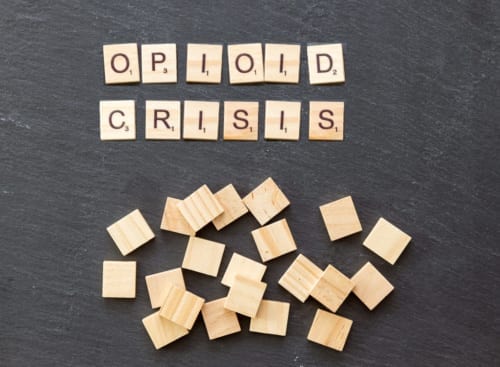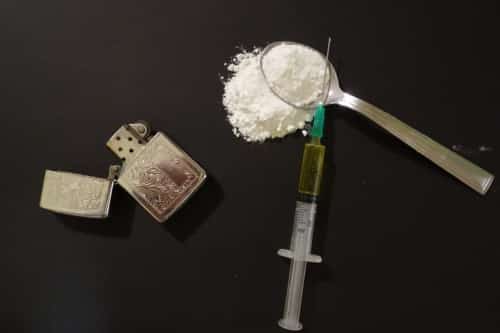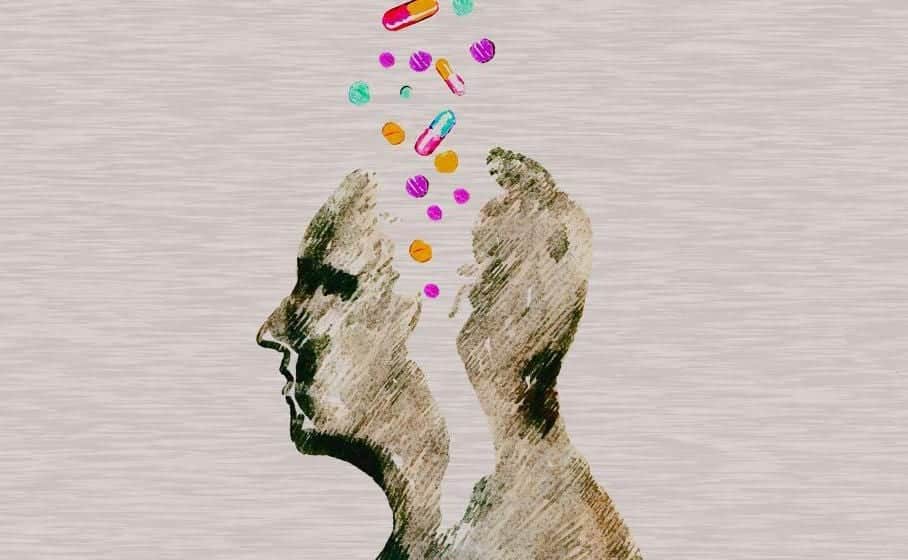The DEA and Discovery Education’s Efforts to Prevent its Growth by Robin Porter
 The opioid epidemic is a serious national problem that is affecting the health and welfare of nearly every community across America. In 2016, approximately 12.5 million people indicated misusing prescription painkillers and nearly one in six teens said they had used prescription medicine at least once in their lifetimes to get high. With approximately 144 drug overdose deaths per day in the United States and 63 percent of those deaths related to misuse of prescription opioids, or some combination of heroin and fentanyl, there is a dire need to reverse this trend in a nationwide effort.
The opioid epidemic is a serious national problem that is affecting the health and welfare of nearly every community across America. In 2016, approximately 12.5 million people indicated misusing prescription painkillers and nearly one in six teens said they had used prescription medicine at least once in their lifetimes to get high. With approximately 144 drug overdose deaths per day in the United States and 63 percent of those deaths related to misuse of prescription opioids, or some combination of heroin and fentanyl, there is a dire need to reverse this trend in a nationwide effort.
Pharmaceutical opioids are commonly prescribed due to their ability to relieve pain efficiently. Opioids work by binding to specific proteins called opioid receptors that exist in the brain, spinal cord, and gastrointestinal tract. After attaching to them, the opioid triggers an excess flow of certain neurotransmitters, including dopamine, a type of chemical signal that makes people feel good. When used safely, prescription opioids have the strength to alleviate some of the most severe and chronic pain. When misused, however, serious health risks – including addiction, overdose and death – may occur.
Heroin and fentanyl are two opioids that are playing a large role in the epidemic and the fatalities it is causing. Both are very potent, rapidly-acting, and can have dangerous effects on the body in just one dose. Like other opioids, heroin and fentanyl reduce pain sensations and increase pleasure and relaxation by binding to opioid receptors in the brain. However, heroin is an illegal substance with no accepted medicinal use in the United States and fentanyl is a synthetic opioid that is 50 to 100 times more potent than morphine. While pharmaceutical fentanyl does have approved medicinal uses, the DEA classifies it as a Schedule II controlled substance, indicating that it has a very high potential for abuse and addiction. However, fentanyl and fentanyl variations are often produced illicitly for use as cutting agents or fillers in heroin. These illegal fentanyls are cheap, relatively easy to obtain, and dramatically increase the potency of heroin. Given fentanyl’s lethality, it has led many unsuspecting drug users to overdose because it is often passed off as pure heroin.
 Opioid use may start with a legitimate medical need for treatment of pain, but it can soon lead to physical dependency. Long-term misuse of opioids can lead the body to produce less dopamine over time, causing cravings for more in greater doses. Due to the highly addictive nature of opioids, prevention and education are two vital keys to reducing misuse and addiction. According to Psychology Today, habits that develop early in life can become very difficult to break. If individuals are taught at a young age about the science behind opioids and addiction, they will be less likely to misuse opioids in the future because they understand their harmful effects and dangers. They will also form positive, healthy lifestyle habits that they will carry with them for the rest of their lives.
Opioid use may start with a legitimate medical need for treatment of pain, but it can soon lead to physical dependency. Long-term misuse of opioids can lead the body to produce less dopamine over time, causing cravings for more in greater doses. Due to the highly addictive nature of opioids, prevention and education are two vital keys to reducing misuse and addiction. According to Psychology Today, habits that develop early in life can become very difficult to break. If individuals are taught at a young age about the science behind opioids and addiction, they will be less likely to misuse opioids in the future because they understand their harmful effects and dangers. They will also form positive, healthy lifestyle habits that they will carry with them for the rest of their lives.
To take action against the opioid epidemic and disrupt its further advancement, federal agencies are also working to inform patients, parents, teens, pharmacists and educators about the dangers of opioid misuse. At Discovery Education, we joined forces with the Drug Enforcement Administration (DEA) to create Operation Prevention.
Launched in 2016, Operation Prevention provides educators, students and families with standards-aligned resources including digital lesson plans, interdisciplinary activities, a family toolkit, and an interactive e-learning module called “The Science of Addiction: The Stories of Teens.” It has also hosted two Virtual Field Trips to allow students to virtually meet neuroscientists, DEA agents, drug prevention experts, those in recovery, and community members that have been impacted by the opioid epidemic. All resources are free of cost, require no local sponsorship or corporate funding, and are designed to help students make informed decisions about the misuse of prescription opioids, and to kick-start honest dialogue about substance abuse disorder in homes and classrooms across the country.
 Operation Prevention has been designed to help students understand the risks and impact to their bodies and brains of misusing opioids and using heroin. It has also been designed to help students grasp the personal, social, and economic impact of the epidemic to communities across the nation and to learn more about its impact on their own community. The resources are broken out by grade band:
Operation Prevention has been designed to help students understand the risks and impact to their bodies and brains of misusing opioids and using heroin. It has also been designed to help students grasp the personal, social, and economic impact of the epidemic to communities across the nation and to learn more about its impact on their own community. The resources are broken out by grade band:
- Through a series of lessons and activities, elementary students learn how medication works in our bodies, the differences between over-the-counter and prescription medicine, how to read and follow dosage instructions, and why it is so important to use medicine responsibly and store it safely.
- Middle school digital lessons focus on the science behind how addiction and withdrawal affect the body’s many systems and how the community can be influenced by the opioid epidemic. Students create a peer-to-peer social media campaign about the epidemic and act as investigative reporters to learn more about the epidemic’s impact on their community. In the e-learning module, students meet teens who are struggling with prescription opioid misuse and heroin use, learn the science behind their powerful stories, and develop strategies they can use if they or someone they know is faced with a difficult decision related to opioids.
- High school digital lessons focus on the science behind prescription opioid and heroin addiction, overdose and withdrawal and how the epidemic has become a public health crisis. In the e-learning module, students meet teens who are struggling with prescription opioid misuse and heroin use, learn the science behind their powerful stories and develop strategies they can use if they or someone they know is faced with a difficult decision related to opioids.
- High school students 13 years and older also have the unique opportunity to participate in the annual Operation Prevention video challenge, a competition for teens to submit original 30-60 second public service announcements that warn other students about the dangers of opioid abuse. The 2018 contest is currently accepting entries.
 While Operation Prevention and its resources have reached more than one million students, there is still much work to be done to reverse this national health crisis. As we face an epidemic to which no one in the United States is immune, there is no better time than now to take a stand and fight back.
While Operation Prevention and its resources have reached more than one million students, there is still much work to be done to reverse this national health crisis. As we face an epidemic to which no one in the United States is immune, there is no better time than now to take a stand and fight back.
More information on Operation Prevention and access to the program’s free resources for students, educators, parents and communities are available at operationprevention.com.
Author
 Robin Porter has been in the field of education for more than 30 years. She began her career as a middle school teacher in Pennsylvania and Maryland. She then moved to USA Today where she directed content development for the newspaper’s education division.
Robin Porter has been in the field of education for more than 30 years. She began her career as a middle school teacher in Pennsylvania and Maryland. She then moved to USA Today where she directed content development for the newspaper’s education division.
Following her work at USA Today, she served as an education consultant for Fortune 500 companies, education associations, sports teams, and museums and for whom she developed more than 150 education programs for K-12 students, educators and parents.
Robin currently leads the development of print and digital content and curriculum for Discovery Education’s corporate and association partnerships programs.
Follow Robin Porter on Twitter
Further Reading
- National Geographic – The Science Of Addiction
- CBS News – How addiction causes “hundreds of changes” in the brain
- TIME – Why Teenage Brains Are So Hard to Understand


